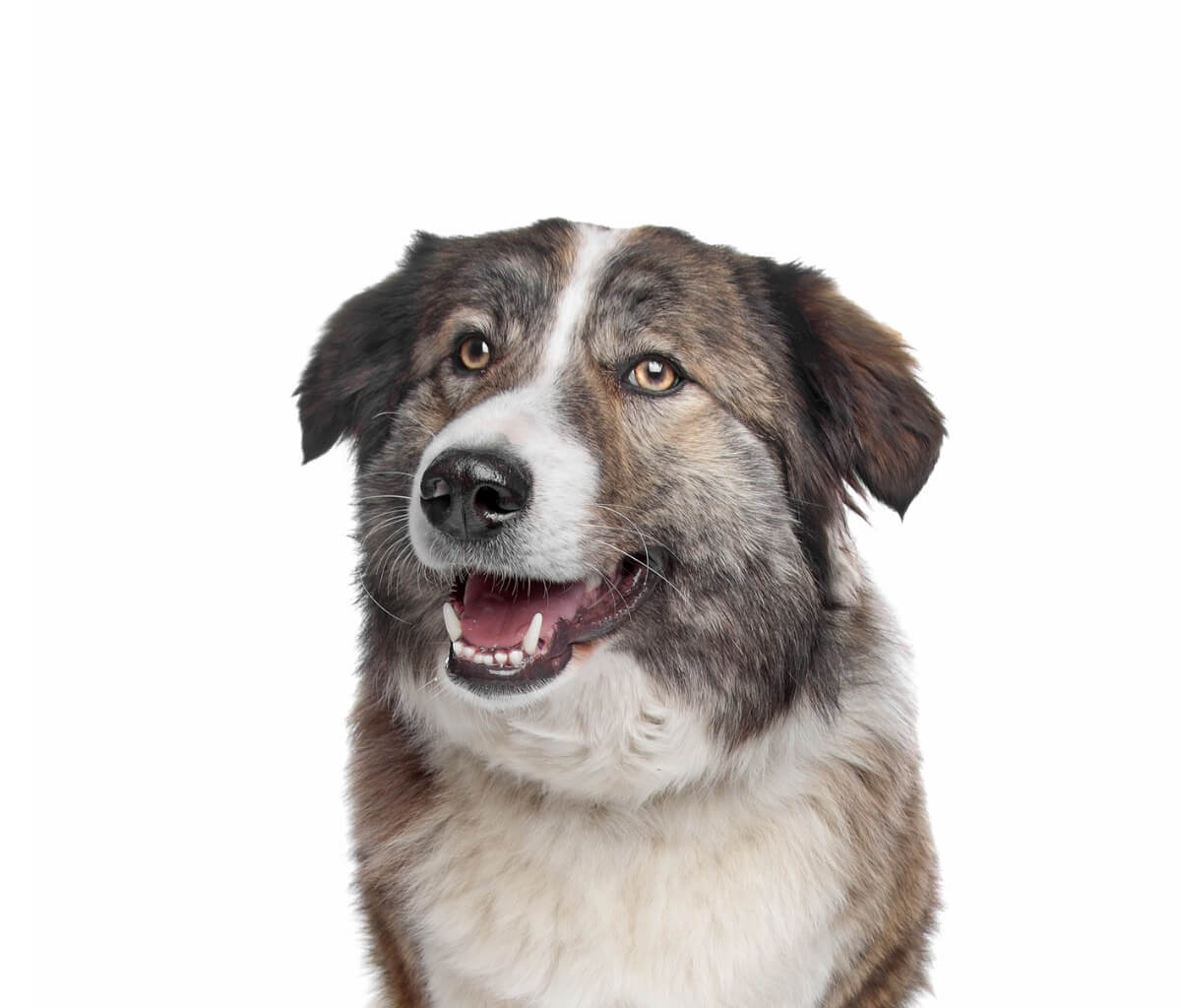Aïdi or Atlas Mountain Dog: All About this Breed

The Aïdi or Atlas Mountain dog is often confused with the mastiff, since both belong to the group of Molosser and have been chosen over many years to guard farms and grazing. However, this breed is originally from North Africa.
If you’re interested in getting to know more about this dog, here you’ll find all the information you need: its appearance, character, care tips, and health. Don’t miss anything, because such large dogs need extensive preparation before you can receive them.
Physical characteristics
The Atlas Mountain dog is very large – its height is 52-62 centimeters and it weighs about 33-45 kilograms. Its life expectancy is usually about 14 years if well looked after, and so it’s considered to be a long-lived dog.
This dog has a muscular and balanced body in terms of head size, unlike other molossus dogs with larger skulls. Its most distinctive feature in relation to its group is the triangular shape of its head and its drooping ears with rounded tips.
Its coat is thick and somewhat longer than normal in relation to its size and weight. In addition, it carries more on the tail and neck. It can have several shades recognized in the Fédération Cynologique Internationale (FCI): white, sand, fawn, reddish, brindle, black and white, white and fawn, and tricolor.

History of the breed
The Atlas Mountain Dog, as its name suggests, is originally from the mountains and plateaus of North Africa, especially Morocco. They’ve been bred to be shepherd dogs and defend the flock from predators. It’s also common to see them as farm guard dogs.
The Aïdi, or Atlas Mountain dog, was officially recognized as a breed in 2003, but its natural origin goes back hundreds of years.
The character of the Aïdi
The Aïdi is a very loyal dog to its owners. It’s also a dog that’s always alert to any sign of danger, with an inert instinct to protect its family.
They’re brave, courageous dogs that don’t hesitate to face threats that are stronger than them in order to defend their owners. However, this virtue can become a problem if they aren’t taught to socialize properly, as they could become overprotective and not be able to tolerate strangers.
Special needs
As they have such high levels of energy, and are bred to perform in the field, they need a lot of exercise. Because of this and their large size, they aren’t suitable for small apartments, neither should they spend many hours alone. They need an extension of land where they can move and play as they please.
On the other hand, they’re quite gluttonous dogs and tend to put on weight. Being overweight is a problem that causes them joint issues over time, in addition to the other pathologies associated with it: diabetes, cardiovascular problems, etc.
Its coat also requires special attention. As it’s so thick and longer than that of other canines, it’s common for them to lose a lot of hair and will need weekly brushing. During the molting season, they can easily get knots and tangles, and so you’ll have to increase the frequency of combing then.
Psychological and educational needs
As mentioned above, these dogs tend to overprotect their owners and territoriality due to their herding heritage. They’re also stubborn animals and it’s difficult to get them to abandon bad habits.
However, the Atlas Mountains dog is very intelligent and always ready for action, and so it’ll be very easy to educate them through positive reinforcement. Its calm, balanced character is a great help for this process, as it has a great attention span.
Therefore, the Atlas Mountain dog should be a psychologically stable animal, as long as it receives the correct socialization as a puppy and good positive training. Although it’s distrustful with strangers, it’s able to relate properly with them, and so you shouldn’t throw in the towel.
The health of the Aïdi or Atlas Mountain dog
This breed generally enjoys good general health. However, its size and heritage make it prone to certain conditions. The most common are the following:
- Hip dysplasia: This usually becomes apparent with advancing age. In this case, the femur dislodges itself from the socket of the hip joint, the acetabulum.
- Dislocation of the elbow or knee: As above, it’s related to the wear and tear of the joints and the large size of the breed.
- Gastric torsion-dilatation syndrome: Due to a previous dilatation of the stomach, this organ turns on itself, preventing the passage of food and proper blood supply. It’s a veterinary emergency that can cause the animal’s death.
- Otitis: In general, dogs with droopy ears can accumulate dirt in this area, as it doesn’t have sufficient ventilation. If regular hygiene isn’t maintained, there’s a risk of infection.
One last tip is that you should always look to the vet for help with this breed, as a dog of this size can easily, yet unintentionally, cause problems and accidents. Always make sure you keep your dog’s schedule of vaccinations, deworming, and check-ups up to date, and don’t hesitate to contact a trainer for help with any behavioral problems that may arise.
All cited sources were thoroughly reviewed by our team to ensure their quality, reliability, currency, and validity. The bibliography of this article was considered reliable and of academic or scientific accuracy.
- Federación Cinológica Internacional. (s. f.). AÏDI (CHIEN DE MONTAGNE DE L’ATLAS). FCI. Recuperado 13 de diciembre de 2021, de http://www.fci.be/es/nomenclature/PERRO-DE-MONTANA-DEL-ATLAS-AIDI-247.html
- Mayoral Palanca, I., Ynaraja, E., Rodríguez Franco, F., & Sainz Rodríguez, A. (1995). Tratamiento médico de la dilatación-torsión gástrica en el perro: manejo de la emergencia médica y preparación de la cirugía. Clínica veterinaria de pequeños animales, 15(3), 0146-166.